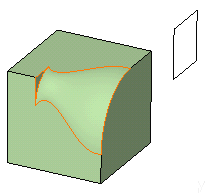Click Variable Radius Fillet
 .
.
The Variable Radius
Fillet Definition dialog box appears.
Select the open edge to be filleted.
You can define variable radius fillets on closed edges.
For more information, see Variable Radius Fillets Using Closed
Edges. The application detects both vertices and displays two
identical radius values.
The
 icon available after the Edges to fillet box lets
you edit the list of the faces to be filleted. For more information
about that capability, see
Editing a List of Elements.
Optionally, click Preview to see the fillet to be
created.
icon available after the Edges to fillet box lets
you edit the list of the faces to be filleted. For more information
about that capability, see
Editing a List of Elements.
Optionally, click Preview to see the fillet to be
created.
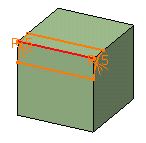
Enter a new radius value to simultaneously change the
radius of both vertices. For example, enter 12mm.
The new radius value is displayed on both vertices. The preview is modified
accordingly.
You can use the radius value R=0 to create a variable radius fillet.
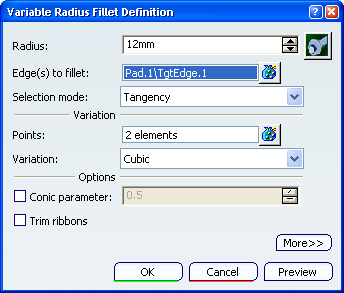
Keep Minimal as the propagation mode you
want to use.
Click the Points box then a point on the
edge to be filleted.
The application displays the radius value on
this point. Note that to remove a point from the selection,
you just need to click this point.
You can also add points by selecting planes. For more information,
see the end of the task. You can add as many points as you wish.
Enter a new radius value for this point: enter 4. The
new radius value is displayed.
This is your preview:
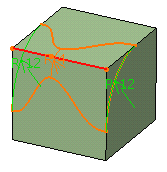
The variation mode is set to Cubic: keep
this mode. To see the Linear propagation mode, see
More about Variable Radius Fillets.
Click OK to confirm the operation.
The edge is filleted. The specification tree
indicates this creation.
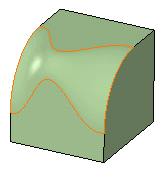
To edit this fillet, double-click EdgeFillet.1
in the specification tree.
To access additional options, expand the dialog box
by clicking More..
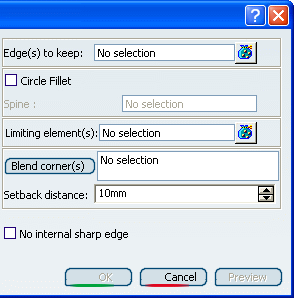
Click the Limiting
elements box and select Plane.1 as the plane that will trim the
fillet.
An arrow
appears on the plane pointing to the portion of material that
will be kept.
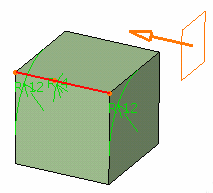
Click this arrow to reverse the direction and therefore
specify that the portion of material to be kept will be the opposite
one.
Click OK.
The variable radius fillet is trimmed to Plane.1.
The final part looks like this:
